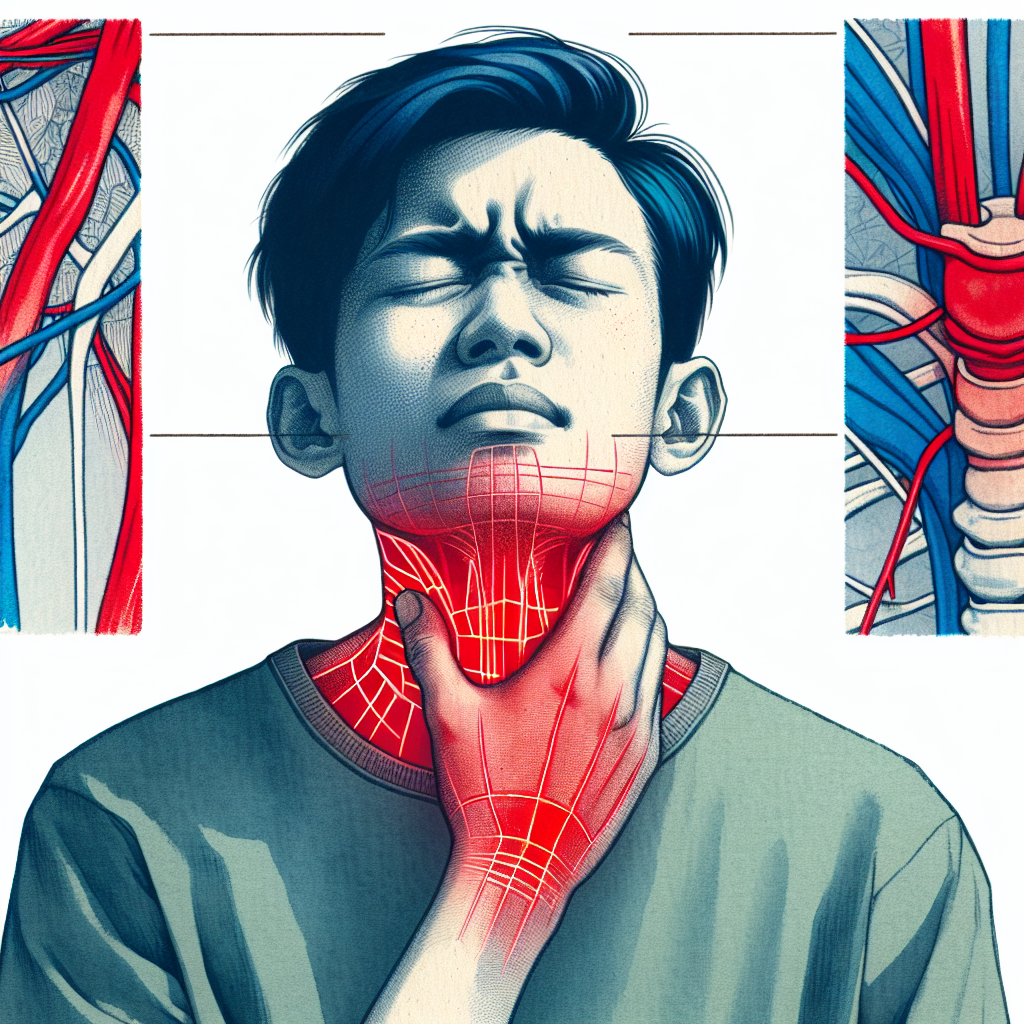Table of Contents
Introduction
Neck and shoulder pain is a common condition that affects many individuals at some point in their lives. This type of pain can stem from various causes, including poor posture, overuse, injury, or underlying medical conditions. The neck, or cervical spine, is composed of vertebrae that extend from the skull to the upper torso, with cervical discs absorbing shock between the bones. The muscles, bones, and ligaments of the neck support the head and allow for motion.
Any abnormalities, inflammation, or injury can lead to neck pain or stiffness. Similarly, the shoulder is a complex joint with several layers of muscles and tendons, which can also be susceptible to injury or strain, leading to discomfort. Addressing neck and shoulder pain often involves a combination of rest, physical therapy, medications, and in some cases, surgical interventions, depending on the severity and cause of the pain.
Understanding Neck and Shoulder Pain: Causes and Symptoms
Neck and shoulder pain is a common ailment that affects a significant portion of the population at some point in their lives. This discomfort can range from a mild annoyance to a debilitating condition that impedes daily activities. Understanding the causes and symptoms of neck and shoulder pain is crucial for identifying the appropriate treatment and management strategies.
The intricate anatomy of the neck and shoulder region is a complex network of bones, muscles, nerves, and tendons, all of which are susceptible to injury and strain. The cervical spine, consisting of seven vertebrae, supports the head and allows for a wide range of motion. However, this flexibility also makes the neck vulnerable to damage. Similarly, the shoulder is a highly mobile joint, which, while allowing for extensive movement, also poses a risk for instability and injury.
One of the primary causes of neck and shoulder pain is muscle strain. This can occur due to overuse, poor posture, or sudden movements that overextend the muscles. Prolonged periods of sitting, especially with incorrect posture, such as hunching over a computer, can lead to chronic muscle tension and discomfort. Repetitive motions or carrying heavy loads can also contribute to strain in these areas.
Another common cause is degenerative conditions, such as osteoarthritis, which can lead to the deterioration of the cartilage in the joints of the neck and shoulder. This degeneration can result in stiffness, reduced mobility, and pain. Additionally, herniated discs in the cervical spine can compress nerves, leading to pain that may radiate down the arm and into the shoulder.
Injuries such as whiplash, resulting from a sudden jerking motion of the head, can cause acute neck pain. Similarly, shoulder injuries like rotator cuff tears, dislocations, or fractures can lead to intense and immediate pain. These injuries often require prompt medical attention to prevent further damage and to facilitate healing.
The symptoms of neck and shoulder pain can vary widely depending on the underlying cause. Pain may be sharp and localized, or it may be a dull ache that spreads across a broader area. Some individuals may experience a tingling sensation or numbness if nerve compression is involved. Limited range of motion and difficulty performing everyday tasks, such as lifting objects or turning the head, are also common symptoms.
In addition to physical symptoms, neck and shoulder pain can have secondary effects, such as headaches, fatigue, and even mood changes due to the constant discomfort and disruption of normal activities. It is important to note that in some cases, neck and shoulder pain can be a symptom of a more serious condition, such as a heart attack or meningitis. Therefore, it is essential to seek medical advice if the pain is severe, persistent, or accompanied by other concerning symptoms.
In conclusion, neck and shoulder pain is a multifaceted issue with a variety of potential causes and symptoms. From muscle strain and poor posture to degenerative diseases and acute injuries, the origins of this pain are diverse. Recognizing the signs and understanding the possible causes are the first steps toward seeking effective treatment and relief. Whether through rest, physical therapy, medication, or in some cases, surgery, addressing neck and shoulder pain is vital for maintaining a healthy, active lifestyle. As with any health concern, consulting with a healthcare professional is recommended to ensure an accurate diagnosis and appropriate care.
Effective Home Remedies for Alleviating Neck and Shoulder Pain

Neck and shoulder pain is a common ailment that affects many individuals, often resulting from poor posture, overuse, or even stress. While chronic or severe pain should be addressed by a healthcare professional, there are several effective home remedies that can alleviate mild to moderate discomfort in these areas.
One of the simplest yet most effective ways to reduce neck and shoulder pain is through the application of heat or cold. Heat therapy, such as using a warm compress or heating pad, can help relax tense muscles and improve blood circulation. On the other hand, cold therapy, like applying an ice pack, can reduce inflammation and numb sharp pain. It is important to use these treatments appropriately; for instance, cold therapy is most beneficial within the first 48 hours of an injury, while heat is more suitable for chronic stiffness.
Another remedy involves gentle stretching and strengthening exercises. Stretching can help alleviate tension and improve flexibility, while strengthening exercises can build support for the neck and shoulder muscles, potentially preventing future pain. Yoga and Pilates are excellent options for incorporating both elements into a regular routine. However, it is crucial to perform these exercises correctly to avoid exacerbating the pain, and if in doubt, consulting a physical therapist for guidance is advisable.
Massage is another therapeutic option that can provide relief. Self-massage or using tools like foam rollers can help release knots and tightness in the muscles. For those who prefer professional assistance, a licensed massage therapist can target specific areas and provide a more intensive treatment. Massage not only helps with pain but also promotes relaxation and stress relief, which can indirectly contribute to reducing muscle tension.
Maintaining proper posture throughout the day is also essential in preventing and reducing neck and shoulder pain. Ergonomic adjustments to the workspace, such as ensuring the computer screen is at eye level and using a chair that supports the lower back, can make a significant difference. Additionally, being mindful of posture while using mobile devices can prevent the strain commonly known as “text neck.”
Hydration is another factor that is often overlooked when addressing muscle pain. Muscles need water to function properly, and dehydration can lead to muscle cramps and increased sensitivity to pain. Ensuring adequate water intake can thus play a role in managing discomfort.
Lastly, stress management techniques such as deep breathing exercises, meditation, or engaging in hobbies can help alleviate tension in the neck and shoulders. Stress can cause muscles to tighten reflexively, leading to pain, so finding ways to relax both the mind and body is beneficial.
In conclusion, neck and shoulder pain can be a significant hindrance to daily activities, but there are numerous home remedies that can provide relief. From heat and cold therapy to stretching, massage, posture correction, hydration, and stress management, individuals have a variety of options to explore. While these remedies can be effective for mild to moderate pain, it is important to seek medical advice for persistent or severe pain to rule out any underlying conditions. By taking proactive steps at home, one can manage neck and shoulder pain effectively and improve overall well-being.
The Role of Ergonomics in Preventing Neck and Shoulder Pain
Title: Neck and Shoulder Pain
The Role of Ergonomics in Preventing Neck and Shoulder Pain
Neck and shoulder pain are common complaints among individuals who spend long hours at their desks, often resulting from poor ergonomic practices. Ergonomics, the science of designing the workplace to fit the user’s needs, aims to increase efficiency and productivity while reducing discomfort and the risk of injury. Understanding and implementing ergonomic principles is crucial in preventing the onset of neck and shoulder pain, which can lead to chronic issues and decreased quality of life if left unaddressed.
One of the primary factors contributing to neck and shoulder pain is the improper alignment of the workstation. When a computer monitor is placed too high, too low, or too far away, it forces the user into an unnatural position, straining the muscles and ligaments in the neck and shoulders. Ideally, the top of the monitor should be at or slightly below eye level, allowing the neck to remain in a neutral position. Additionally, the monitor should be about an arm’s length away, preventing the need to lean forward or strain the eyes, which can further exacerbate tension in these areas.
Similarly, the height and positioning of the keyboard and mouse play a significant role in maintaining proper posture. A keyboard that is too high forces the shoulders to elevate, while one that is too low causes slouching, both of which can lead to muscle strain over time. An adjustable keyboard tray can help maintain the arms at a comfortable 90-degree angle, with wrists in a neutral position, minimizing the risk of developing repetitive strain injuries that can contribute to neck and shoulder pain.
Moreover, the choice of chair is a pivotal aspect of an ergonomic workspace. A chair with inadequate support can lead to slumping or leaning, which puts additional pressure on the neck and shoulders. An ergonomically designed chair should have adjustable height, lumbar support, and armrests, allowing the user to sit with feet flat on the floor, knees at a 90-degree angle, and arms supported at the same level as the desk. This alignment helps distribute weight evenly and reduces the load on any single muscle group.
In addition to physical workstation adjustments, incorporating regular breaks and exercises into the work routine can mitigate the risk of pain. Prolonged static postures can cause muscles to become stiff and sore. Therefore, taking short breaks every hour to stretch or walk around can improve circulation and relax tense muscles. Simple neck and shoulder stretches can be performed at the desk and are effective in preventing stiffness and maintaining flexibility.
Furthermore, awareness of one’s posture throughout the day is essential. Even with an optimally designed ergonomic workspace, poor habits such as slouching, cradling the phone between the ear and shoulder, or leaning on one arm can negate the benefits of ergonomic adjustments. Continuous self-monitoring and correction of posture can help reinforce good practices and prevent the development of pain.
In conclusion, ergonomics plays a vital role in preventing neck and shoulder pain, particularly for those who spend extensive periods at a desk. By ensuring proper alignment of the workstation, selecting appropriate furniture, taking regular breaks for movement and stretching, and maintaining awareness of posture, individuals can significantly reduce their risk of experiencing discomfort. As the prevalence of desk-bound jobs continues to rise, the importance of ergonomics in maintaining musculoskeletal health cannot be overstated. By prioritizing ergonomic principles, we can create a healthier and more productive work environment for all.

Neck and Shoulder Pain: When to Seek Professional Help
Neck and shoulder pain is a common ailment that affects many individuals at some point in their lives. The complexity of the neck and shoulder anatomy, coupled with the demands of modern life, such as prolonged sitting and screen time, can contribute to discomfort and dysfunction in these areas. While occasional aches and pains are often benign and may resolve with self-care, there are circumstances when professional help is necessary to address underlying issues and prevent further complications.
Understanding when to seek professional help for neck and shoulder pain is crucial for maintaining overall health and well-being. Typically, if pain persists for more than a week despite self-care measures such as rest, over-the-counter pain relievers, and gentle stretching, it may be time to consult a healthcare provider. Additionally, if the pain is severe, sudden, or accompanied by symptoms such as numbness, tingling, weakness, or loss of coordination, immediate medical attention is warranted. These symptoms could indicate nerve compression or other serious conditions that require prompt intervention.
Moreover, pain that arises from an injury, such as a fall or a car accident, should be evaluated by a professional. Trauma to the neck or shoulder can result in fractures, dislocations, or soft tissue injuries that may not be immediately apparent but can have long-term consequences if left untreated. A healthcare provider can perform a thorough assessment, including physical examination and imaging studies if necessary, to diagnose the extent of the injury and recommend an appropriate treatment plan.
Chronic neck and shoulder pain, which is pain that lasts for several weeks or longer, is another indicator that professional help is needed. Chronic pain can be a sign of degenerative conditions such as osteoarthritis, herniated discs, or chronic overuse syndromes like tendinitis. A healthcare provider can help identify the root cause of chronic pain and offer solutions that may include physical therapy, prescription medications, or in some cases, surgical options.
Furthermore, pain that disrupts daily activities or sleep should not be ignored. Pain that is severe enough to interfere with work, leisure activities, or restorative sleep can have a significant impact on quality of life. A professional can help manage pain effectively, allowing individuals to return to their normal routines and enjoy a better quality of life.
It is also important to consider the role of posture and ergonomics in neck and shoulder pain. Poor posture and non-ergonomic workstations can exacerbate pain and lead to chronic issues. A healthcare provider or physical therapist can offer guidance on proper posture and ergonomic adjustments to reduce strain on the neck and shoulders. This proactive approach can help prevent the recurrence of pain and promote long-term musculoskeletal health.
In conclusion, while neck and shoulder pain is a common complaint, it is essential to recognize when professional help is needed. Persistent, severe, or chronic pain, as well as pain resulting from injury or affecting daily life, should be evaluated by a healthcare provider. Early intervention can lead to more effective treatment, prevent further injury, and ensure that individuals can maintain an active and pain-free lifestyle. By paying attention to the signals the body sends and seeking professional help when necessary, individuals can take an important step toward safeguarding their neck and shoulder health.
Exercises and Stretching Techniques for Neck and Shoulder Pain Relief
Neck and shoulder pain is a common ailment that affects many individuals, often due to poor posture, prolonged sitting, or overuse injuries. Fortunately, there are several exercises and stretching techniques that can provide relief and improve flexibility, strength, and posture, thereby reducing the likelihood of pain recurrence.
To begin with, one of the simplest yet effective exercises for alleviating neck pain is the chin tuck. This exercise helps in strengthening the muscles that pull the head back into alignment over the shoulders. To perform a chin tuck, sit or stand with your spine in a neutral position, and gently draw your chin straight back, creating a double chin. Hold this position for five seconds before releasing. Repeating this exercise several times throughout the day can help in maintaining good neck posture.
Transitioning from the chin tuck, neck tilts can further stretch and strengthen the muscles. Gently tilt your head to one side, bringing your ear towards your shoulder until a stretch is felt on the opposite side of your neck. Hold this position for about 30 seconds, then slowly lift your head back to the starting position and repeat on the other side. This exercise can be particularly beneficial for those who experience tightness in the sides of their neck.
Moreover, shoulder rolls are an excellent way to relieve tension and improve the range of motion in the shoulder area. Start by lifting your shoulders up towards your ears, then roll them back, down, and around in a circular motion. After several rotations, reverse the direction. This movement helps to loosen the muscles around the shoulders and neck, promoting relaxation and circulation.
In addition to these movements, the doorway stretch is a powerful technique for opening up the chest and shoulders, areas that often become tight from hunching over computers or phones. Stand in a doorway with your arms on the door frame, elbows at a 90-degree angle. Gently lean forward until you feel a stretch in the front of your shoulders and chest. Hold this position for up to 30 seconds, being careful not to overextend, which could cause discomfort.
Another key exercise is the levator scapulae stretch, which targets a muscle that often contributes to neck and shoulder pain. To perform this stretch, sit or stand with your back straight. Turn your head to a 45-degree angle, and then tilt it downward as if looking towards your armpit. With the same side hand, gently apply pressure to the back of your head, enhancing the stretch. Hold for 30 seconds and then switch sides.
Furthermore, incorporating strengthening exercises such as shoulder blade squeezes can help in building support for the neck and upper back. Sit or stand with your arms at your sides, and imagine holding a pencil between your shoulder blades. Squeeze the shoulder blades together, hold for a few seconds, and then release. This exercise not only strengthens the muscles but also encourages proper alignment.
Lastly, it is important to remember that consistency is key when it comes to exercises and stretching for neck and shoulder pain relief. Regular practice can significantly reduce pain and improve quality of life. However, it is also crucial to listen to your body and avoid any movements that cause pain or discomfort. If pain persists, it is advisable to consult a healthcare professional for a tailored treatment plan.
In conclusion, neck and shoulder pain can be mitigated through a series of targeted exercises and stretches. By incorporating these techniques into a daily routine, individuals can experience relief from pain, enhanced mobility, and a greater sense of well-being. With dedication and proper execution, these simple yet effective methods can lead to long-term benefits for those suffering from neck and shoulder discomfort.
The Impact of Stress on Neck and Shoulder Pain and How to Manage It
Neck and shoulder pain is a common ailment that affects countless individuals worldwide, often impairing their daily activities and quality of life. While there are numerous causes for this discomfort, one of the most significant yet frequently overlooked contributors is stress. The impact of stress on neck and shoulder pain is profound, as it can exacerbate existing conditions or even be the primary cause of tension and pain in these areas.
Stress, a natural response to challenging situations, triggers a cascade of physiological reactions in the body, including the release of hormones like cortisol and adrenaline. These hormones prepare the body for the “fight or flight” response, causing muscles to tense up as part of the body’s readiness to react to a perceived threat. When stress becomes chronic, this muscle tension can persist, particularly in the neck and shoulders, areas that are especially prone to storing stress-related tension.
Moreover, stress can lead to behavioral changes that further contribute to neck and shoulder pain. For instance, individuals under stress may adopt poor postures, such as hunching over a desk or constantly checking their mobile devices, which can strain the muscles and connective tissues in these regions. Additionally, stress can disrupt sleep patterns, leading to fatigue and decreased muscle recovery, compounding the problem of muscle tension and pain.
To manage stress-induced neck and shoulder pain, it is essential to address both the physical and psychological aspects of stress. One effective strategy is to engage in regular physical activity, which can help to release built-up tension in the muscles. Exercise also promotes the release of endorphins, natural painkillers and mood elevators, which can counteract the effects of stress hormones. Activities such as yoga and tai chi are particularly beneficial, as they combine physical movement with mindfulness and deep breathing, enhancing relaxation and stress relief.
Another key approach is to improve one’s posture, especially during work hours or while using electronic devices. Ergonomic adjustments to the workspace, such as positioning the computer monitor at eye level and using a chair that supports the natural curve of the spine, can help prevent the development of muscle strain. Taking regular breaks to stretch and move around is also crucial in preventing stiffness and maintaining muscle flexibility.
Mindfulness and relaxation techniques, such as meditation and deep breathing exercises, can be powerful tools in managing stress. By focusing on the present moment and controlling one’s breath, individuals can activate the body’s relaxation response, reducing muscle tension and alleviating pain. Additionally, cognitive-behavioral therapy (CBT) can help individuals develop healthier ways of coping with stress, thereby reducing its impact on the body.
Lastly, seeking professional help can be beneficial for those dealing with chronic neck and shoulder pain. Physical therapists can provide targeted exercises and treatments to strengthen muscles and improve range of motion. Massage therapy can also be effective in releasing muscle knots and promoting relaxation.
In conclusion, the relationship between stress and neck and shoulder pain is undeniable. By recognizing the role that stress plays in exacerbating these conditions, individuals can take proactive steps to manage their stress levels and alleviate pain. Through a combination of physical activity, posture improvement, relaxation techniques, and professional guidance, it is possible to mitigate the impact of stress on the body and lead a more comfortable, pain-free life.
Q&A
1. What are common causes of neck and shoulder pain?
Common causes of neck and shoulder pain include muscle strains, worn joints, nerve compression, injuries, diseases such as rheumatoid arthritis, and conditions such as degenerative disc disease.
2. How can neck and shoulder pain be treated at home?
Home treatments for neck and shoulder pain can include rest, ice and heat application, over-the-counter pain relievers, gentle stretching, and maintaining good posture.
3. When should someone see a doctor for neck and shoulder pain?
A person should see a doctor for neck and shoulder pain if the pain is severe, persists for several days without relief, spreads down arms or legs, is accompanied by headaches, numbness, weakness, or tingling, or if it occurs after an injury or accident.
4. What are some exercises to relieve neck and shoulder pain?
Exercises to relieve neck and shoulder pain include neck tilts, rotations, and stretches, shoulder rolls, shrugs, and scapular squeezes, as well as gentle strengthening exercises like wall push-ups.
5. Can stress contribute to neck and shoulder pain?
Yes, stress can contribute to neck and shoulder pain as it can lead to muscle tension and tightening, particularly in the trapezius muscles that run across the shoulders and back of the neck.
6. What is the role of ergonomics in preventing neck and shoulder pain?
Ergonomics plays a significant role in preventing neck and shoulder pain by ensuring that workstations, furniture, and tools are designed to fit the user’s body and minimize strain. Proper chair height, monitor placement, and keyboard positioning can help maintain good posture and reduce muscle strain.
Conclusion
Neck and shoulder pain can be attributed to a variety of causes, including poor posture, overuse, trauma, degenerative diseases, and stress. Treatment typically involves a combination of rest, physical therapy, medication, and in some cases, surgery. Prevention strategies include maintaining good posture, engaging in regular exercise, and taking breaks during repetitive activities. It is important for individuals experiencing persistent pain to consult healthcare professionals for proper diagnosis and treatment.




0 Comments